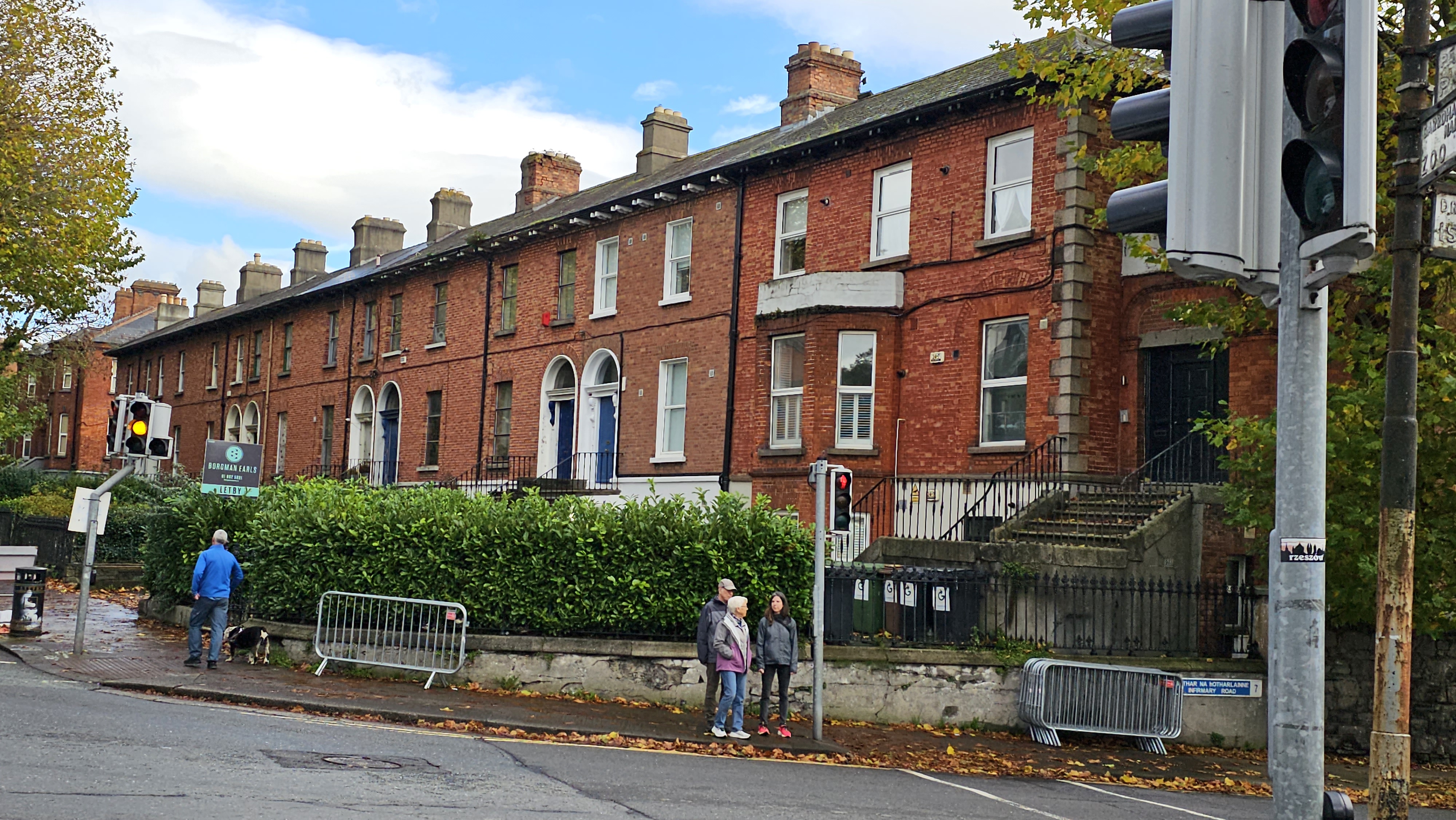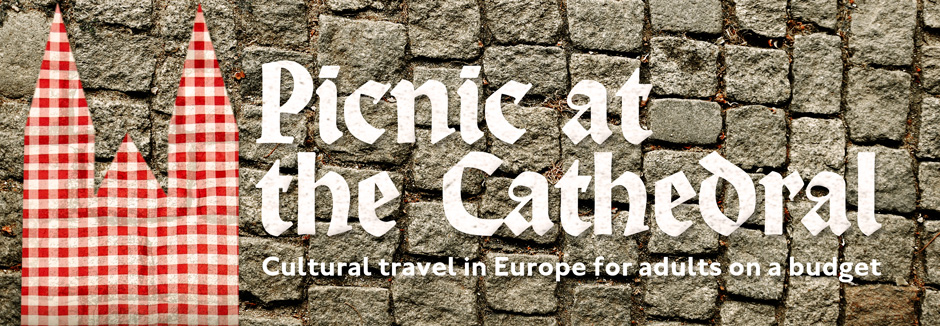Let’s just get the doors over with.

Alrighty, here are some Georgian doors in Dublin.
Everybody happy?
If you’re like me and interested in architectural heritage and planning a trip to Dublin you’re going to encounter a lot of references to these doors, which are nice I guess but being honest I found them sort of boring and neoclassical.
Don’t come at me.

Georgian architecture is interesting, however, when you look at a bigger picture, not just the boring doors. This is Henrietta Street, where you can see all the elements of the Dublin’s Georgian architecture.
The buildings are symmetrical and boxy, made of red brick with chimneys. The number of panes in the windows decrease towards the top of the building in line with Georgian ideas of perfect proportion. You can count the number of windows to tell how grand the building is. So above, there’s a three, four, and five window-wide building (the five window building was originally a mansion, more on that later). And yeah, there are variations on the door surrounds that make lots of folks excitable.

Georgian architecture spans from 1714-1830 so the buildings have since been modified from the originals. I saw a lot of more modest Georgian buildings around Dublin without the original window panes. Some had stairs.

Here’s another one with quoins on the side. I think the bayed window was added later.

This is a different view of Henrietta Street, where I visited a museum called 14 Henrietta Street.
14 Henrietta Street, which you can only see with a tour, gives the social history of the building starting from when it was constructed in the 1740’s. At that time there was one family in residence (and all their servants, of course). By the 1800’s, the wealthy people had moved away and by the 1900s, this former mansion was a tenement building housing 17 families—over 100 people.

At the start of the tour we saw a model of the house showing how the original rooms were later broken up by partitions into 17 tiny apartments, with just two toilets shared by all the residents.

14 Henrietta Street’s final tenement residents moved out in the 1970’s and was abandoned until it was turned into a museum in 2018. They’ve retained a lot of the original details, like paint on the stairwells with a color scheme that was apparently common to all tenements at the time; Raddle red and Reckitt’s blue.

Writing on the stairwell reads “Any persion who tampers with anny ting or who is not reardint in this house will be prosaciutead by law”.
14 Henrietta Street’s doors were never locked and people with nowhere else to go would come sleep in the hallways. Imagine how cold it got in the winter!

The basement apartment is the bleakest. While none of the apartments had running water or electricity, this place must have been dark even during daylight. Thirteen family members were sharing two beds with coats used as blankets.

Another apartment, on a higher floor, is homier.
Our tour guide revealed that he and many of his relatives had grown up in tenement housing (and while he was talking about it his accent got really thick). The guide described the experience of living in a tenement as kind of companiable since there were always people to help out and kids to play with, even claiming to be sad when he moved out.
While I’m not sure I was convinced there could be much to miss from those impoverished living conditions, it did make me think about Georgian architecture from a urban planning perspective. I didn’t see much in the way of private gardens or backyards for Georgian homes. Rather they often seemed to be built around public squares where the green spaces are in common and they are simple in design without a lot of “Hey look at me, I’m fancy!” about them. In that, they are community oriented.
So yeah, thanks to 14 Henrietta Street, you could say I’m I convert to Georgian architecture.
But I still don’t get all the fuss about those doors.



I’m not convinced of the delights of tenement living….
LikeLiked by 1 person
Me either, though I would have like to have had all those neighbor children to play with when I was a kid.
LikeLiked by 1 person
I think they are reproducing that sort of life in the high rises on the edge of Dublin….they have the solution to their kids wanting a pony – they keep it in their flat overnight, bringing it and down on the lifts.
LikeLiked by 1 person
!!!!! https://strangersguide.com/articles/pony-boys/
LikeLiked by 1 person
I’m assuming that you’re to young to recall the ubiquity (in the USA, at least) of that poster (leading to postcards, mugs, etc) “Doors of Dublin”. It was a marker of upwardly mobile, milddle-class taste. The same thing occurred, around the same time with the now-cliched business of “Dreaming Spires of Oxford”. Not coincidentally, the inexpensive manufacture and distribution of high-quality, poster-sized prints came about simultaneously. The USA’s contributions were, of course, Farrah Fawcett’s red swimsuit and the 100-million “Hang in there, Baby!” Kitty posters.
LikeLiked by 1 person
While I’m not too young to remember the Farrah Fawcett or “I hate Monday’s” kitten posters, I was too rural and certainly not upwardly mobile enough to know about the Doors of Dublin and Oxford Spire posters. However, when I went away to college I was exposed to a lot of “Le Chat Noir” and “Flaming June” and my roommate had that one ubiquitous M.C. Escher poster that seemed the height of sophistication.
LikeLike
oh, yes…..Leighton’s “Flaming June” and the ubiquitous, Steinlen cat poster.
There’s a terribly funny scene in the novel “One Day” in which a young man wakes up in the dorm-room of a very earnest, baby-liberal young woman he’d met the night before. She’s still asleep. It’s 1986 or so. He sees a poster of Nelson Mandela….and he just KNOWS that, if he keeps looking, he’s going to see a copy of “The Madwoman In The Attic” and a Tracey Chapman CD. He’s right, of course….the contents of one’s dorm room so glaringly scream the type of adult the college student wants to become (whether they admit it or not). Nowadays, I look at photographs of my early dorm rooms and amusedly wonder at how one can easily read my fortune, so to speak, in how I decorated my room.
LikeLiked by 1 person
When did you go to Ireland?
LikeLiked by 1 person
Late October.
LikeLike